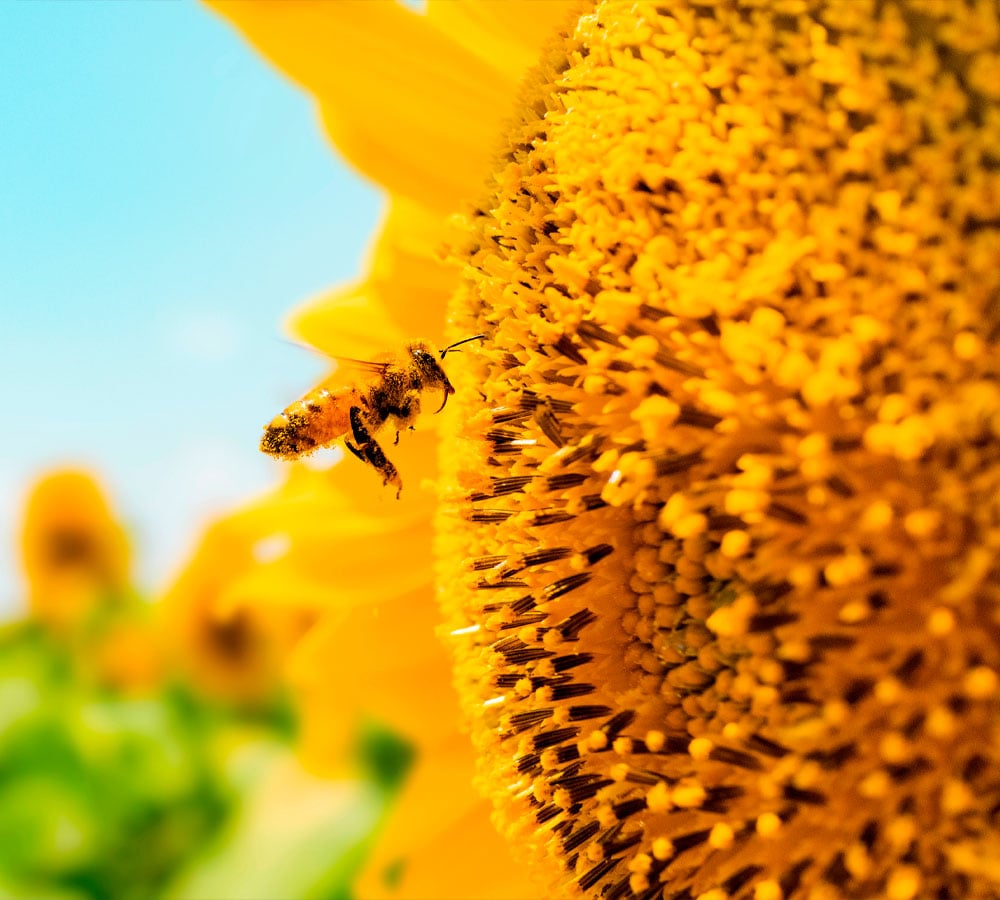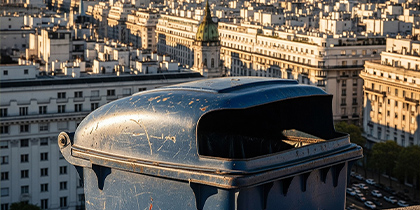What is the state of waste in Buenos Aires, the capital of an empire that never existed?
In this new series 'A look at waste from...' we look beyond the borders of the Netherlands and Belgium. For how do other cities and countries deal with their waste streams? What can we learn from them- and what not?
Circular Economy Officer Elisa Teluij has been working remotely from the Argentine capital for the past three months. From her temporary home in Buenos Aires, she took a closer look at the local waste system. Read along.
A look at waste from...
Buenos Aires: a city in the southern hemisphere, where some 3 million Porteños live and some 3 million people travel in and out every day. It is bursting with street sweepers, press trucks and trash cans.
It is also a city with a clear goal: to reuse 100% of paper and cardboard by 2050. In doing so, they work here according to the 3R method; reduce, reuse & recycle.
How does the waste system work in Buenos Aires?
Most of life takes place outdoors, especially in the hot summer months. In addition, the availability of disposable products and packaging in kiosks and street vendors, cannot be ignored.
This also creates the corresponding amount of waste. At home and abroad, Argentina has a system not unlike the Dutch system. The country distinguishes between wet and dry waste, respectively non-recyclable and recyclable. Dry and "clean" waste consists of metal, glass, paper & cardboard and plastic, where wet waste consists of contaminated packaging, food scraps, rubber, stickers and broken glass, as well as light bulbs.
Meanwhile, the city has met its goal of having a green, and therefore recycle container, for every resident no more than 150 meters from their front door. Mind you, this is some 4075 containers versus 28,495 gray bins that can hold the unseparated waste. By the way, the composition of waste is not comparable to the waste people throw away in Dutch cities, for example.
How much waste is generated in Buenos Aires?
The waste thrown away at home in Buenos Aires is 430 grams per day per person which is about 157 kilograms per person per year!
Almost half (43%) of this amount of waste is organic waste (food scraps and green waste) that now belongs to non-recyclable waste stream. Some 41% of the whole is hypothetically recyclable consisting of 20% plastic, 14% paper, 5% glass, 2% metal and 16% about "the rest. People with pets, and there are a lot of them, generally create more waste than average, as do households with children or people who cook at home.
belongs to non-recyclable waste stream. Some 41% of the whole is hypothetically recyclable consisting of 20% plastic, 14% paper, 5% glass, 2% metal and 16% about "the rest. People with pets, and there are a lot of them, generally create more waste than average, as do households with children or people who cook at home.
When we look at the amount of waste released in the city total, we are talking about huge numbers of 6800 tons of waste per day! This is because of the high number of businesses, industry, sanitation facilities and number of institutions in the city.
The waste infrastructure in Buenos Aires
The city has set a goal that in the future, 80% of residents will separate waste. Currently, only about 46% of residents separate their waste at source, resulting in 20% to 30% separated waste. The city's infrastructure is not yet fully adequate for this, and landfilling is still the main way to "get rid" of waste.
In addition, there is an emerging public awareness regarding waste in the city, this has been created by the so-called cartoñeros. This group of informal waste collectors play an important role in Buenos Aires by collecting recyclable materials from the garbage. They have been important in the city's waste management in recent decades, especially since the 2001 economic crisis, which forced many people to find alternative ways of living.
Their work reduces pressure on urban landfills and makes waste separation incredibly visible, contributing to public awareness. They collect the waste with large bags on carts or bicycles. They then take these bags to one of 16 greencenters, which are similar to Dutch recycling centers. Large collectors also bring waste here that can be separated, after which it will be processed elsewhere.
The largest processing site, the CRC, which stands for El Centro de Reciclaje de la Ciudad, was the first to be able to process and recycle 6 different streams. This is where the streams from the 16 green centers come in turn. By the way, the press trucks drive around in the evening and at night, this because of the large amount of traffic in the city during the day. Street sweepers also operate there 24/7.
A look at the future from...
The future? Pilot projects for organic material collection, given the large amount of waste of this category generated by the city. Collaboration between public and private enterprise and NGOs make these pilots possible.
In addition, there are huge opportunities for the 3 million residents and their 3 millionone commuters to get started themselves. Potentially, some 84% of the waste would qualify for some form of treatment, reuse or recycling. Only 16% of the waste generated is currently labeled non-recyclable.
If the opportunities for circularity and excellent waste management are now exploited as well as they are on the soccer field, they will become world champions in this too, ché vamooos!

Keepingup to date
Want to stay informed about all new developments? Follow us onLinkedIn, listen to the podcast 'Raw material for thought' or subscribe to the newsletter. Are you curious about what Milgro can do for your operations and waste process? Then get in touch.












